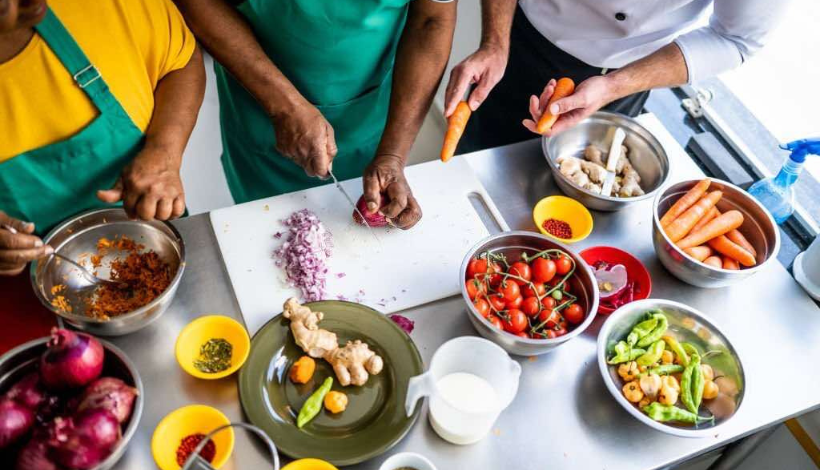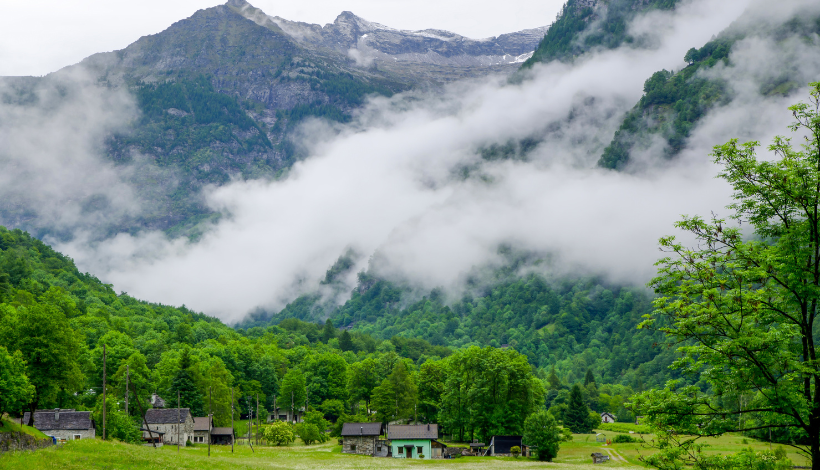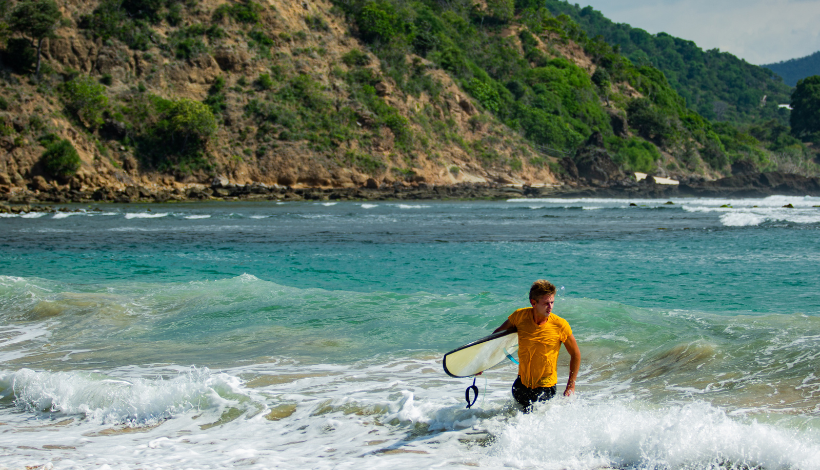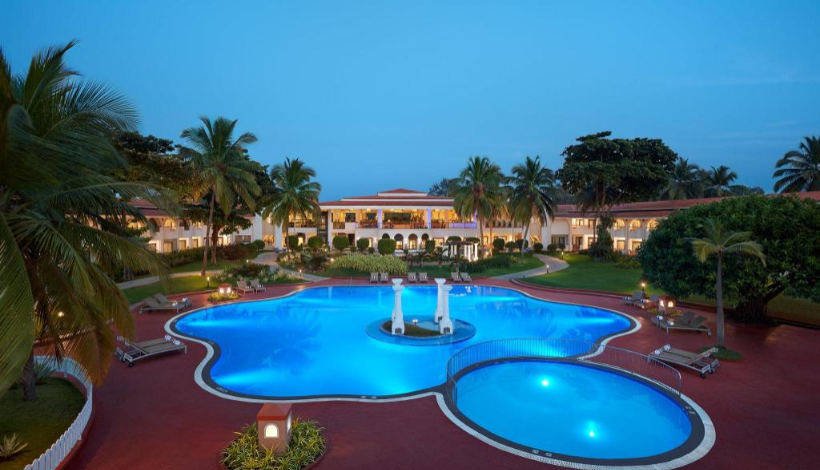Calories don't count when they're foreign. That's the rule. The unspoken agreement between travellers and their waistbands when exploring destinations through taste rather than sightseeing checklists.
Culinary travel changes how people experience places. Markets become destinations. Meal times dictate itineraries. The best stories start with "So I tried this thing..." rather than "We saw this monument..." Food sticks in memory longer than photos ever will.
Some destinations earned their reputations one dish at a time. Others hide their culinary credentials behind more famous attractions. The smart travellers know to skip the tourist traps, follow the locals, and eat where the queues form.
Spice Capitals: Where Heat Meets Flavour

South India doesn't apologise for its spice levels. Chettinad cuisine from Tamil Nadu layers heat through multiple chilli varieties and pepper blends. Meals arrive on banana leaves. Rice mounds get surrounded by sambar, rasam, multiple curries, chutneys, and pickles. The combinations shift by household, by restaurant, by day.
What makes South Indian spice different:
-
Curry leaves in everything
-
Tamarind cuts through heat
-
Coconut tempers aggression
-
Black pepper adds depth beyond chilli burn.
Kerala's seafood curries simmer in coconut milk spiked with curry leaves and mustard seeds. Fish gets cooked hours after leaving boats. Prawns arrive the size of small lobsters. The spicing stays complex without overwhelming the seafood itself.
Thailand's spice reputation centres on som tam and southern curries. Green papaya salad brings heat through fresh chillies pounded with palm sugar, fish sauce, lime, and garlic. The balance matters-sweet, sour, salty, and spicy hitting simultaneously. Southern Thai curries add turmeric and dried spices borrowed from Indian Ocean trade routes.
Flights to Thailand land travellers in Bangkok, but the real heat lives down south. Phuket, Krabi, Trang-these places serve curries that make central Thai food taste mild. Yellow curry with fish. Massaman with beef falling off bones. Gaeng som's sour-spicy punch.
Sri Lanka sits between South India and Southeast Asia flavour-wise. The food borrows from both whilst maintaining a distinct identity. Rice and curry means a dozen small dishes surrounding a rice mound. Hoppers-bowl-shaped pancakes-get eaten for breakfast with egg or curry. Kottu roti chops flatbread with vegetables and meat on hot griddles, the rhythmic chopping audible streets away.
Street Legends: Where the Best Dishes Abroad Hide

Street food in Asia peaks in Hanoi's Old Quarter. Vendors occupy specific corners for decades. Bun cha-grilled pork with noodles and herbs-gets served from 11 AM till sold out. Pho stalls open at 6 AM and close by noon. Banh mi carts park near markets. The timing matters. Show up at the wrong hours, and vendors pack up, disappearing until the next day.
What defines Hanoi street food:
-
Ultra-specific specialisations-one dish only
-
Plastic stools on pavements
-
No English menus, just pointing
-
Locals eating means it's good.
Bangkok's street food operates differently. Night markets sprawl for blocks. Vendors cook dozens of dishes. Pad thai sizzles on flat tops. Satay grills over charcoal. Mango sticky rice gets assembled fresh. The variety overwhelms first-timers.
Yaowarat-Bangkok's Chinatown-transforms after dark. Guay Jub shops serve peppery pork soup. Oyster omelettes arrive crispy-edged and custardy-centred. Century egg congee. Roast duck over rice. The district feeds locals and tourists equally, prices staying reasonable despite the central location.
Vietnam food tour essentials extend beyond Hanoi:
-
Hue's bun bo Hue is spicier and more complex than pho
-
Hoi An's cao lau-pork and noodles found nowhere else
-
Da Nang's mi quang-turmeric noodles with shrimp and pork
-
Saigon's banh xeo-sizzling crepes stuffed with prawns.
Each city guards specific dishes. Recipes don't travel well. The water in Hoi An supposedly makes cao lau impossible to replicate elsewhere. Whether true or marketing doesn't matter-the food tastes different from city to city.
Royal Flavours: When Aristocrats Influenced Kitchens
Rajasthani thali presents aristocratic excess made democratic. What maharajas ate now fills metal plates at dhabas and restaurants. Dal baati churma-lentils, baked wheat balls, and sweetened crumbled wheat-anchors the meal. Gatte ki sabzi. Ker sangri. Papad. Pickles. Chutneys. The meal sprawls across 12-15 dishes.
Royal Rajasthani cooking shows in:
-
Ghee quantities-nothing stays dry
-
Yoghurt-based gravies preserved without refrigeration
-
Desert ingredients adapted through necessity
-
Multiple courses despite arid environment
Udaipur and Jodhpur restaurants serve thalis matching palace banquet standards. Modern diners eat like royalty for ?900-1,350 per person. Unlimited refills continue until guests surrender.
Parisian pastries carry aristocratic DNA differently. Croissants, pain au chocolat, éclairs, and macarons-these emerged from royal kitchens and monasteries before reaching bakeries. The technique demands precision. Laminated dough. Exact temperatures. Timed proofing.
The best dishes abroad often trace to royal origins:
-
Beijing duck from imperial kitchens
-
Thai royal cuisine's carved vegetables
-
Moroccan bastilla from Fez palaces
-
Italian risotto alla Milanese from noble houses
The recipes democratised over centuries. What once fed aristocrats now satisfies everyone willing to queue or pay.
Food Markets: Where Local Life Happens
Markets reveal city rhythms better than museums. Bangkok's Or Tor Kor Market sells ingredients home cooks actually use. Mangoes sorted by variety and ripeness. Twenty types of chillies. Fish sections displaying morning catches. Ready-to-eat stalls offer samples-fried chicken, papaya salad, and grilled fish.
What separates good markets from tourist traps:
-
Locals shopping for groceries, not souvenirs
-
Prices displayed are negotiable, never inflated
-
Ingredients sold alongside prepared food
-
The market opens early; real business happens pre-noon.
Ho Chi Minh City's Ben Thanh Market splits personality. The tourist section occupies the front-souvenirs, silk, and coffee. The back feeds locals. Pho for breakfast. Banh mi assembled fresh. Com tam-broken rice with grilled pork-is served till afternoon. Prices drop the further in you walk.
La Boqueria in Barcelona crowds with tourists photographing fruit displays. The back stalls serve locals. Oysters shucked to order. Iberico ham sliced paper-thin. Seafood fried at counters. Breakfast here beats most restaurant meals.
Culinary travel improves dramatically when markets replace supermarkets. Ingredients tell regional stories. Vendors explain cooking methods. Samples get offered freely. The education happens through eating rather than reading.
Local Cooking Classes: Learning by Doing
Chiang Mai cooking schools follow similar patterns. Morning market tours picking ingredients. Return to kitchen spaces-outdoor pavilions usually. Cook four to six dishes under instructor guidance. Eat everything. Take recipes home.
What makes cooking classes worthwhile:
-
Market visits showing real ingredient sourcing
-
Hands-on prep-no watching instructors cook
-
Small groups, individual attention
-
Recipes adjusted for home kitchens abroad
The best classes teach techniques over specific dishes. Knife skills. Curry paste pounding. Balancing flavours. Understanding when fish sauce or lime juice tips scales.
Hoi An's cooking classes add farm visits. Herb gardens. Rice paddies. Water buffalo. The connection between ingredients and land becomes visible. City-raised travellers discover where food originates before kitchens.
Vietnam food tour cooking classes concentrate in three cities. Hanoi teaches northern dishes-pho, bun cha, and spring rolls. Hue covers imperial cuisine-complex preparations, artistic presentations. Hoi An focuses on central specialities-white rose dumplings, cao lau, and banh xeo.
Italian cooking classes in Tuscany or Bologna follow different rhythms. Pasta making. Sauce preparations. Wine pairings. The pace stays relaxed. Meals last hours. The cooking becomes a social event rather than skills training.
Budget Dining vs Fine Dining Picks
Street Food Asia delivers quality at impossible prices. Bangkok pad thai costs ?180. Hanoi pho runs ?135. Mumbai vada pav sells for ?27. The food quality doesn't correlate with prices. Street vendors specialising in one dish for decades often outcook restaurant chefs juggling menus.
Budget dining advantages:
-
Specialisation breeds excellence
-
High turnover means fresh ingredients
-
Locals eating alongside proves quality
-
Multiple meals daily stay affordable
Hotels in Vietnam often include breakfast buffets showcasing regional dishes. Pho stations. Banh mi counters. Fresh tropical fruit. The quality varies by hotel tier, but even mid-range properties serve solid Vietnamese breakfast options.
Fine dining entered Asia's food capitals properly in the last two decades. Bangkok's Gaggan reinvented Indian cuisine through molecular techniques before closing. Nahm served royal Thai recipes. Bo.lan focused on disappearing regional dishes.
Fine dining shifts culinary travel through:
The experiences differ fundamentally from street eating. Not better necessarily-different. A ?17,850 tasting menu and a ?180 bowl of noodles both deliver satisfaction, just through opposite approaches.
Hanoi's fine dining scene emerged recently. Anan Saigon brings northern Vietnamese techniques upmarket. Home Hanoi serves traditional recipes in refined settings. The menus stay rooted in Vietnamese flavours, whilst presentations lean contemporary.
Budget travellers eating street food three meals daily spend ?900-1,350. Fine dining once weekly whilst maintaining street food habits balances experiences and budgets. Most culinary travel benefits from mixing both approaches rather than committing to one exclusively.
Regional Specialities Worth Detours
Some of the best dishes abroad require geographic specificity. Pad Thai tastes different in Bangkok versus Phuket. Ramen varies wildly across Japanese cities-Sapporo's miso, Hakata's tonkotsu, and Tokyo's shoyu. The regional pride runs deep.
Worth planning routes around:
-
Lyon for bouchons serving Lyonnaise cuisine
-
Penang for Malaysian hawker food diversity
-
Oaxaca for mole varieties beyond negro
-
Sicily for seafood and Arab-influenced sweets
These destinations justify visits based purely on food rather than sights. Travellers arrive hungry and leave educated. The meals outlast monument memories.
Making Food the Priority
Culinary travel demands different planning than sightseeing trips. Breakfast locations matter as much as hotels. Lunch timing becomes critical when vendors sell out. Dinner reservations at popular spots need booking weeks ahead.
Skipping meals to fit more activities in ruins food-focused trips. The eating becomes the itinerary. Museums and temples fill time between meals rather than vice versa.
The best food trips balance structure and spontaneity. Book one special meal. Research must-try dishes. Then leave space for recommendations, chance discoveries, and following locals to wherever queues form. The rigid schedule misses magic that happens wandering until something smells good.
Regular food at home never tastes quite right after. That's the permanent souvenir nobody warns about. Worth it, though.




 November 27, 2025
November 27, 2025


 Share
Share
 Download as PDF
Download as PDF  From
From  Travellers & class
Travellers & class  Rent For
Rent For Departure Date
Departure Date 










{{cmnt.comment}}